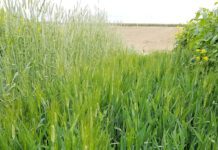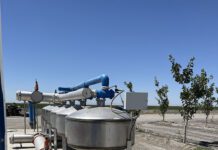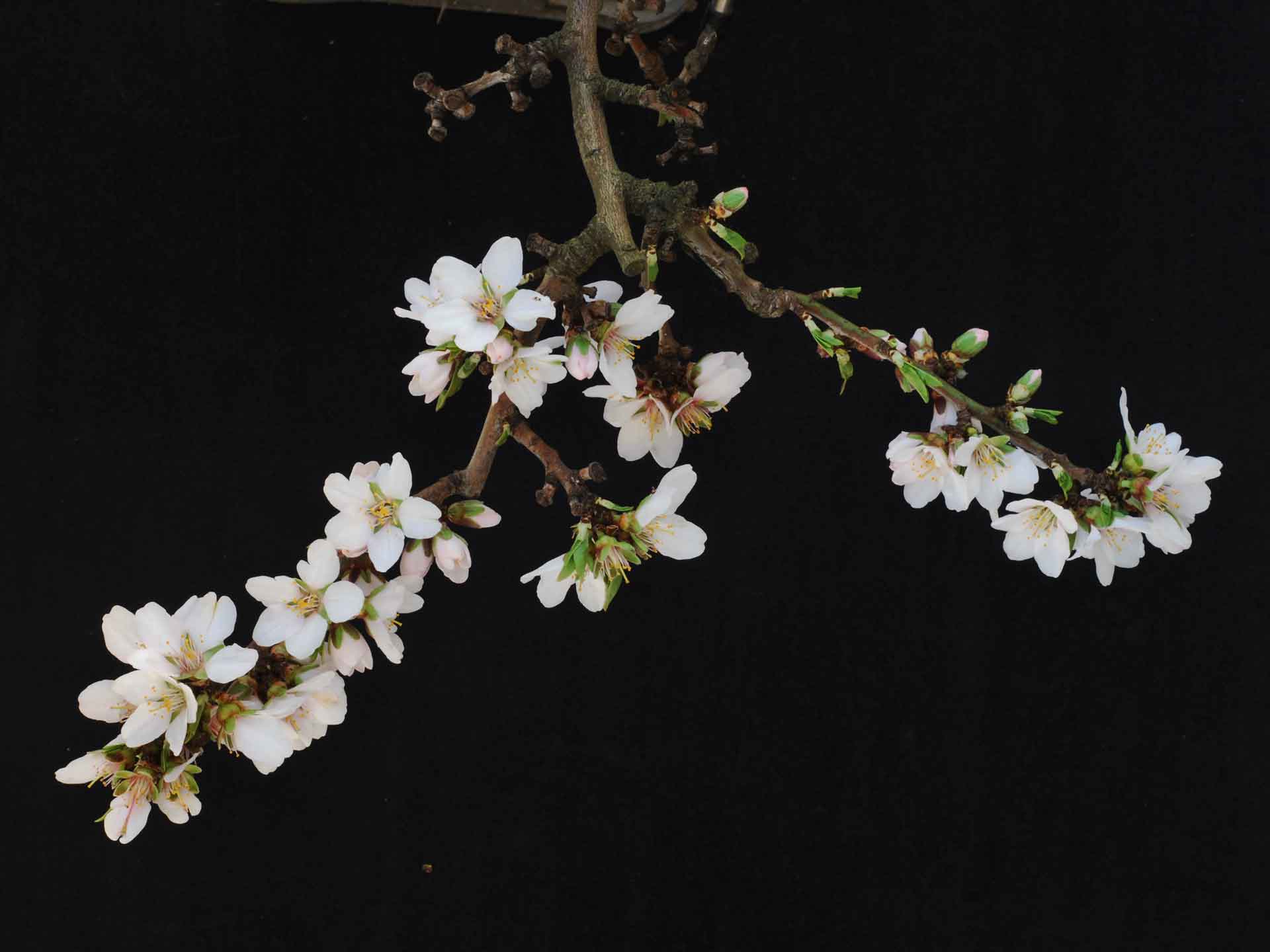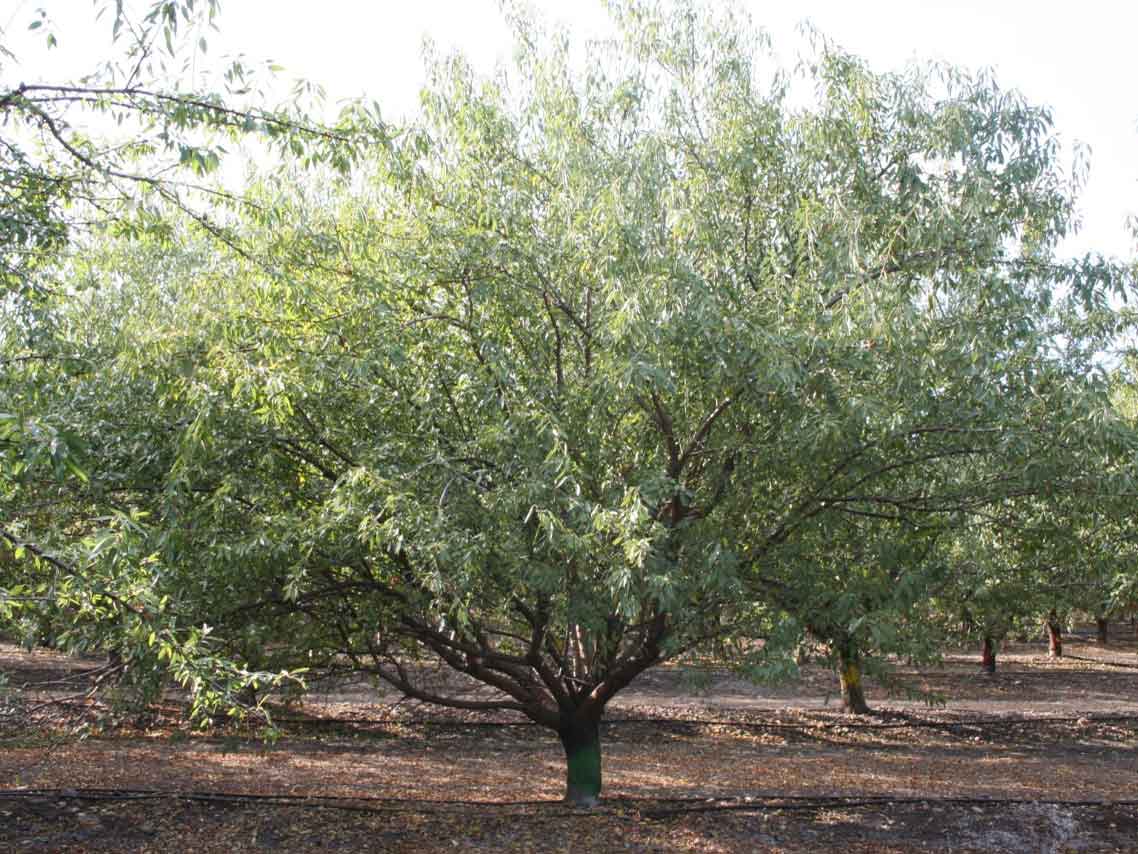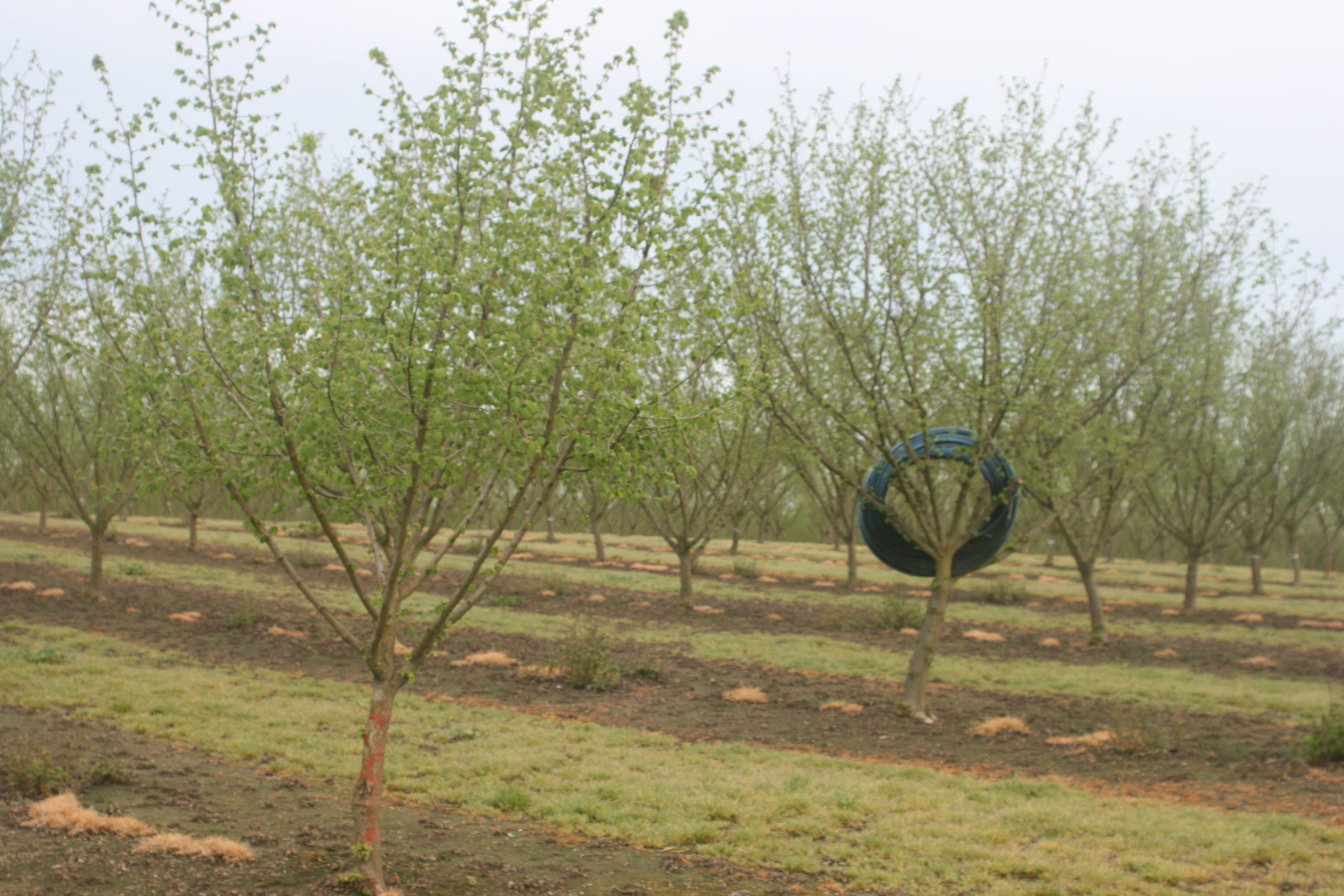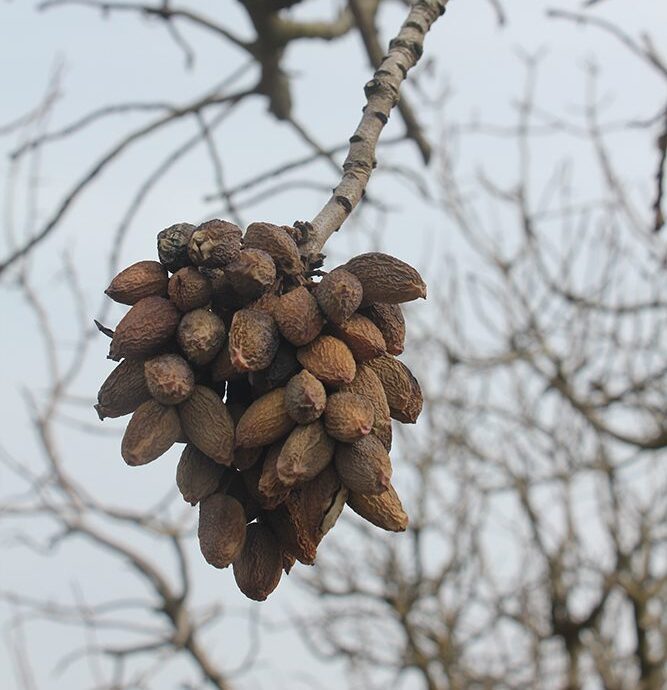
Humans stress over many things in their lives.
It turns out, trees do too.
Many common stressors cannot be actively controlled, such as weather, environment or soil. Irrigation and nutrition management are generally considered grower decisions. Insect and disease stress cannot always be predictable, but growers and managers can make management decisions to mitigate tree stress and protect production.
Key to those decisions is data availability. Luke Milliron, UCCE orchard systems advisor in Butte and Glenn counties, said monitoring and sampling can provide indications of stress.
When it comes to irrigation, using a science-based approach can provide early signs of stress, helping with irrigation timing and rate.
Monitoring tools can track soil moisture status. A pressure chamber can measure the tension of water in the tree, thus helping to decide when to irrigate.
Milliron said distinguishing between water stress and other abiotic factors can be challenging. Using the documented leafing failure in Monterey almonds as an example, he noted it is likely not the singular cause of the problem.
The UC Drought Management Guide states the severity of stress determines its effect on trees.
Recognizing Stressors
Certainly, lack of water or overwatering can cause stress in trees, but nutrient deficiencies or toxicities, salinity, insect pests, vertebrate pests, nematodes and weeds are also significant stressors. Recognizing what can cause tree stress in an orchard is the first step in preventing or mitigating stress levels.
“Stress could be defined as any external factor or condition that negatively impacts tree growth, development or productivity,” said Sebastian Saa, Almond Board’s associate director of agriculture research. Stress can reduce a tree’s ability to produce energy and grow, making it more susceptible to pests and disease.
Matt Comrey, technical nutrition agronomist at Wilbur-Ellis Agribusiness, defines stress as any internal or external factor that inhibits a plant’s ability to carry out its main functions related to photosynthesis, transpiration or metabolism.
“I would categorize sources of stress as either abiotic, such as wind damage, heat or salinity, or biotic stress like insect infestations or disease,” Comrey said.
He explained stress affects tree health by diverting energy away from crop development and growth to combat the stress experienced. This means the tree cannot allocate its limited resources appropriately.
Determining the principal cause of stress in an orchard can be straightforward; an orchard with standing water is one example. However, it can be more difficult to pinpoint the cause if it is a nutritional deficiency or toxicity. Freezes during winter can cause stress, and insect infestations or disease can provoke it. The time of year or growth stage of the crop can also provide clues to the cause of stress.
There are instances when stress is deliberate to elicit a particular response. An example is deficit irrigation in almonds at hull split, a strategy to prevent hull rot and reduce drying time at harvest.
Comrey emphasized the importance of isolating the cause of stress in trees to implement the proper solution. For instance, root disease infection in an orchard can resemble water stress due to the infection’s impact on the root system. The correct solution for this problem is crucial.
Water Stress Affects Yield
In almond production, water stress can reduce the number of nuts, the size of kernels and overall yield. Once a diagnosis has been reached, mitigation or prevention can take place.
Comrey noted there are approaches to irrigation that can mitigate tree stress. Tracking soil moisture with monitoring tools allows time to adjust irrigation rates and timing.
Irrigation scheduling, done with tools to determine amount and timing, can mitigate risks to crop quality. Trees should receive water when they are most sensitive to stress as soon as possible after harvest. Scheduling should recognize the different water needs of various varieties.
Using a pressure bomb to measure the tension of water in a tree can indicate water stress. Irrigating based on evapotranspiration, a climate-based approach, can help avoid stress, but sources of climate information need evaluation.
If water is limited, growers can adjust by applying water when trees are most sensitive to stress and by minimizing water losses during irrigation. The UC Drought Management Guide also notes the size of the orchard and variety can influence water requirements.
A balanced nutrition plan, developed with soil and leaf tissue analysis, can also help mitigate stress.
Adequate calcium can help trees withstand freeze events, limiting ice crystal formation. Soluble carbohydrates can also interfere with ice crystal formation and protect cells, reducing freeze injury. Saa noted nutritional stress depends on the time of year, and soil and leaf nutrient samples help identify likely deficiencies.
Harvest stress can be reduced by shaking and picking in a timely manner so irrigation can resume.
Almond trees can experience salt-induced drought stress when exposed to saline conditions. Inadequate water uptake reduces turgor pressure in the cells that regulate stomatal pore opening, causing them to partially close. The result is increased leaf temperature, decreased transpiration and impaired cellular functions, ultimately leading to leaf burning, especially at the tips.
Salinity Management
The Almond Board of California has a Salinity Management Guide authored by UCCE Farm Advisor Mae Culumber, who notes two types of salt stress that affect almond trees. Osmotic stress makes it difficult for a tree to draw water and nutrients into the roots due to salt accumulation. Specific ion toxicity occurs when salt accumulation reaches a point where the tree cannot exclude salts and begins to take them into the xylem, resulting in necrotic leaves and reduced photosynthetic activity. Over time, tree shoot growth is stunted, and kernel size is reduced.
Water- or soil-applied amendments can address salinity, but Culumber emphasizes soil sampling, including separate samples at different depths, will determine the appropriate amendment type.

Cecilia Parsons | Associate Editor
Cecilia Parsons has lived in the Central Valley community of Ducor since 1976, covering agriculture for numerous agricultural publications over the years. She has found and nurtured many wonderful and helpful contacts in the ag community, including the UCCE advisors, allowing for news coverage that focuses on the basics of food production.
She is always on the search for new ag topics that can help growers and processors in the San Joaquin Valley improve their bottom line.
In her free time, Cecilia rides her horse, Holly in ranch versatility shows and raises registered Shetland sheep which she exhibits at county and state fairs during the summer.








